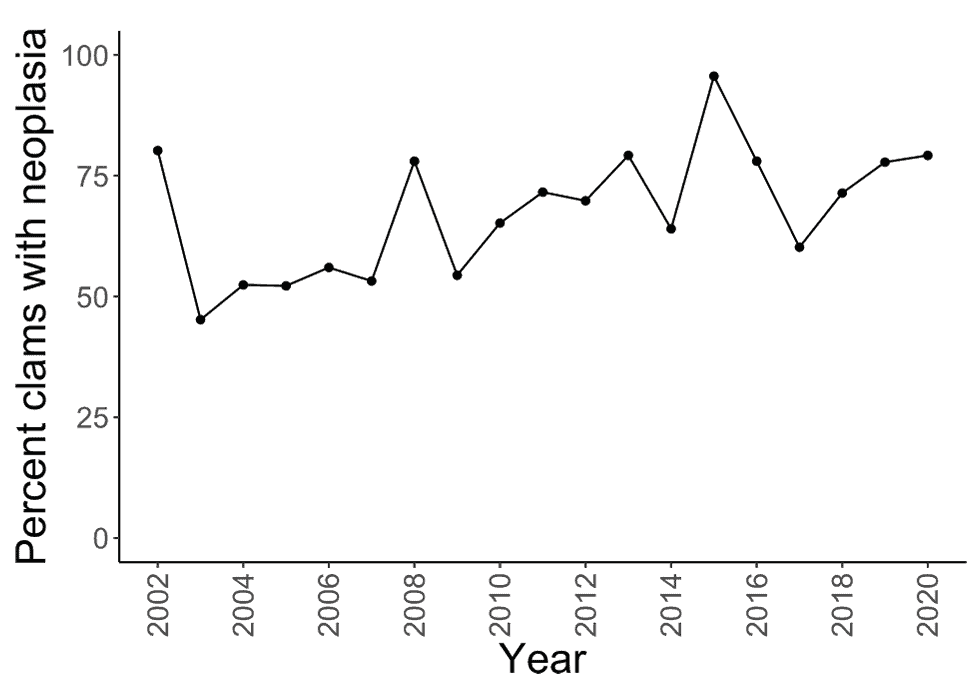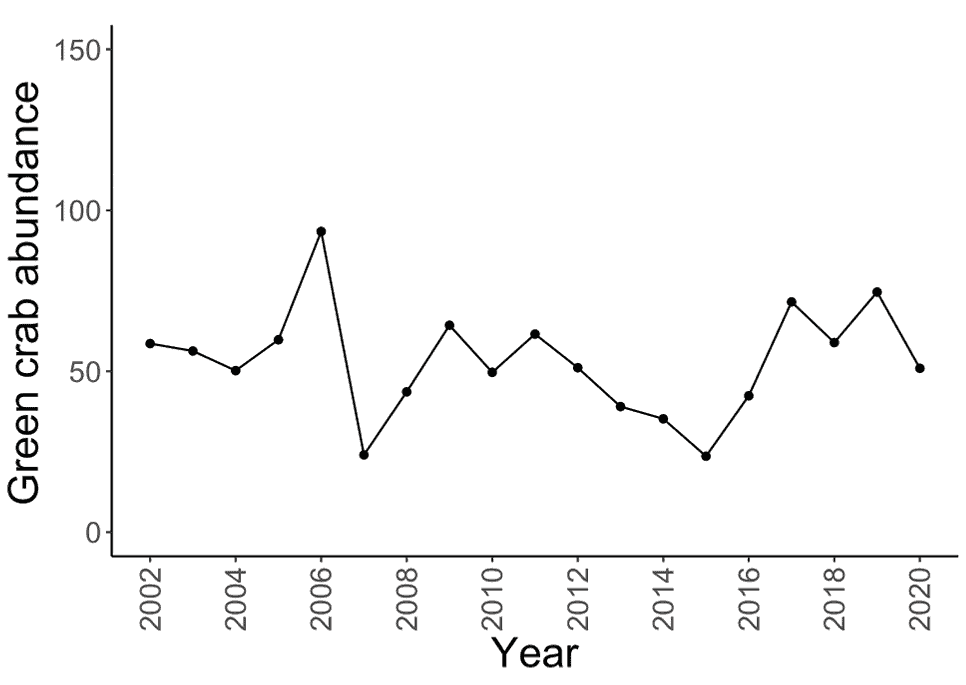Softshell Clams
Clams
What is the current population of adult softshell clams in Hampton-Seabrook Harbor? How has the habitat changed over time?
In 2020, the estimated population of adult softshell clams in Hampton-Seabrook Harbor was 5 .1 million. Before 1998, the population size was variable, with peaks usually of more than 15 million clams. However, since 1998, the population has remained below 10 million and, most often, below 5 million.
In 2020, the estimated population of adult (>50 mm, or almost 2 inches, in shell length) softshell clams (Mya arenaria) in Hampton-Seabrook Harbor was 5.1 million, below the PREP goal of 5.5 million. Softshell clams are present in the Great Bay Estuary although recreational clamming is not as prevalent. Softshell clams are only monitored in the Hampton-Seabrook Estuary at this time. The standing stock of softshell clams at the Hampton-Seabrook Estuary clam flats (Figure 18.1) has fluctuated over the years (Figure 18.2). In some cases, the stock increases were most likely caused by the closure of the flats to harvesting. For example, the clam flats were closed to recreational harvesting from 1989 through 1993 due to a lack of sanitary surveys of the growing areas. The Common Island and Browns River flats were reopened intermittently beginning in 1994. The Confluence and Middle Ground flats were reopened in 1994 and 1998. All flats were and still are periodically closed due to coliform pollution following heavy rains and paralytic shellfish poisoning (red tide) outbreaks. Since the reopening of the flats in 1993 – 1997 and the resulting increase in harvesting, the standing stock of clams has generally declined. Since 2012, it has remained below the PREP goal of 5.5 million (Figure 18.2; Table 18.1).
Standing stock is estimated as the density (number per square meter) of adult clams multiplied by the acreage of the flats. As a result, standing stock is affected by changes in the density of clams as well as the acreage of the flats themselves. Clam flats are an extremely dynamic environment due to sediment erosion and accretion, both driven by storms and human activities such as dredging. PREP and partners are considering changing the metric from standing stock to density of softshell clams to avoid variability caused by changes in the acreage of the flats.
Softshell clams might also be limited by a type of contagious cancer (hemic neoplasia) that affects marine bivalves but is not dangerous to humans. The disease is transmitted directly among softshell clams through the transfer of cells called neoplastic hemocytes.60,61,62 There are several factors that make softshell clams more susceptible to this disease, including pollution (mainly heavy metals and hydrocarbons) and warming water temperatures.63 The percentage of softshell clams infected with neoplasia increased from 2002 through 2015 and has averaged between 60% and 79% since 2015 (Figure 18.3). A review of data collected from 2002 – 2018 indicates that the advanced forms of neoplasia are significantly increasing in the Hampton-Seabrook Estuary.64
Green crabs prey on softshell clams, especially newly settled individuals, reducing softshell clam population size; therefore, studies have noted a significant negative relationship between green crab abundance and density of newly settled softshell clams.65 Green crab abundance in Hampton-Seabrook Harbor was highest in 1992 and 1996 and has generally declined since then (Figure 18.4). Cold winter water temperatures often limit green crab abundance. Given the trend of warming waters in our region, one concern is that green crab abundance will increase as we look towards the future, negatively impacting softshell clams.
Acknowledgments and Credit
Paul Geoghegan (Nomandeau Associates) with contributions from Kalle Matso (PREP) and Trevor Mattera (PREP).
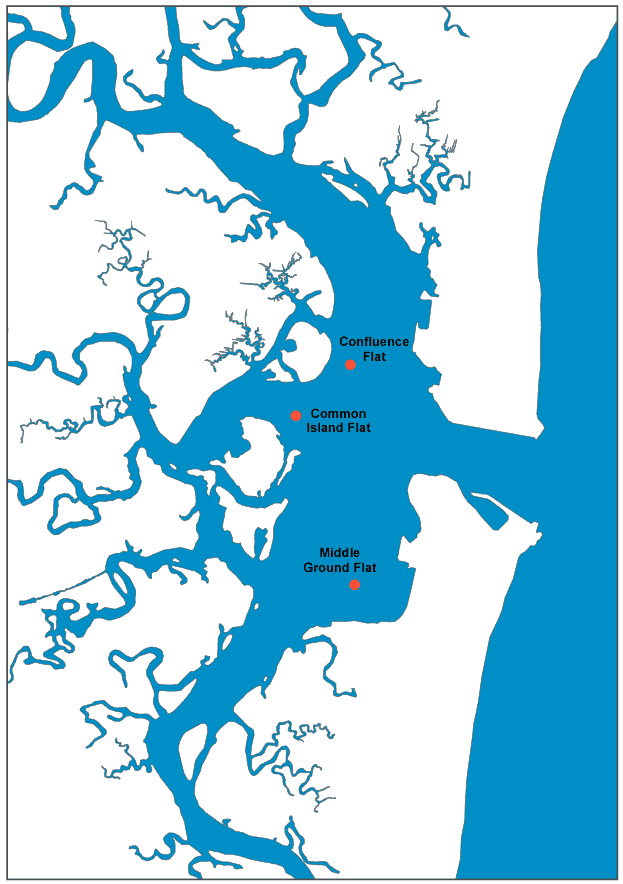
Figure 18.1: Location and names of the three major softshell clam flats in Hampton-Seabrook Harbor: Confluence Flat, Common Island Flat, and Middle Ground Flat. Data source: Normandeau Associates, with support from NextEra Energy.
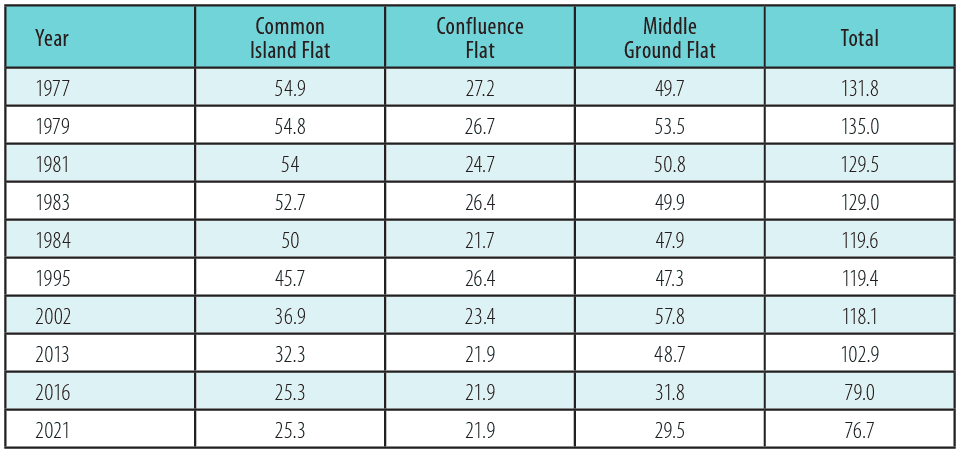
Table 18.1. Acres of the major clam flats used in this report: Common Island Flat, Confluence Flat, and Middle Ground Flat. Data source: Normandeau Associates, with support from NextEra Energy
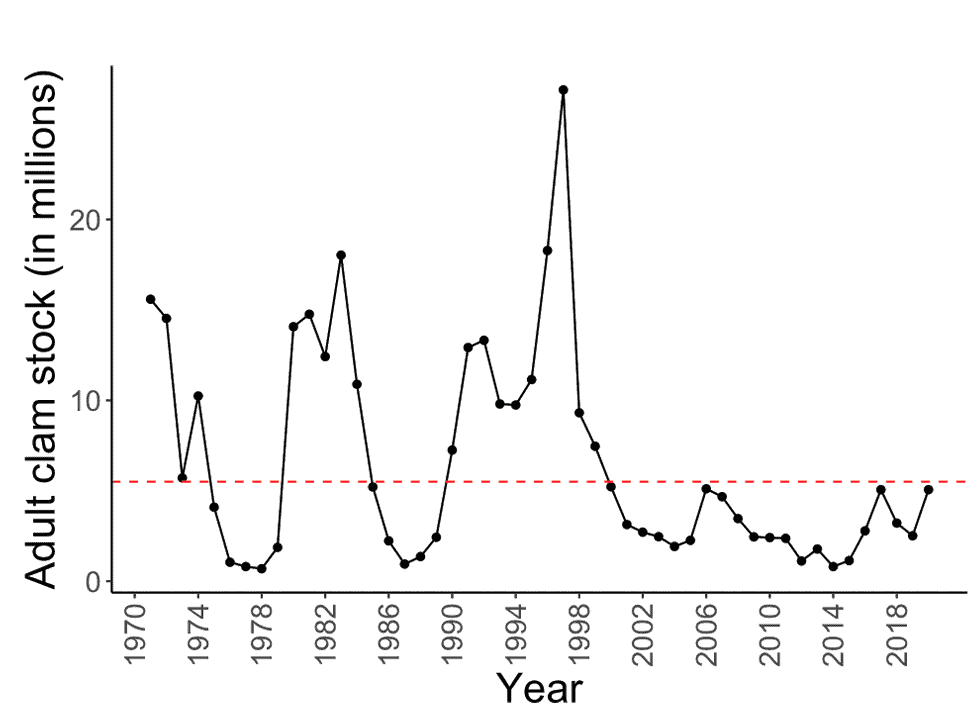
Figure 18.2: Standing stock of adult softshell clams in Hampton-Seabrook Harbor. Red dashed line indicates PREP goal of 5.5 million clams. Data source: Normandeau Associates, with support from NextEra Energy
Softshell Clams – Extended Report
Includes methods, data, and additional discussion not included in the Printed Edition.
